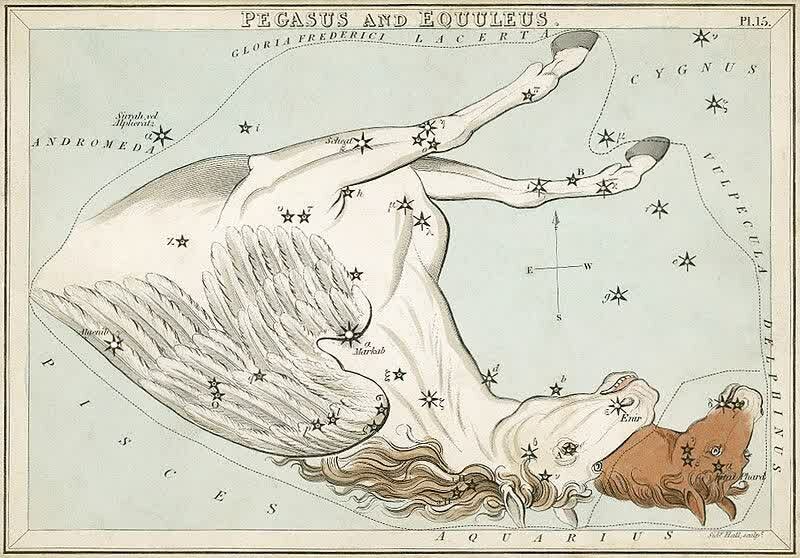In this article, we will talk about the interesting Facts about the Constellation Pegasus. Pegasus is a constellation located in the northern sky. It was one of the 48 constellations listed by Ptolemy. To know more facts about this rainforest check the list below.
Facts about the Constellation Pegasus 1: History in non-Western Astronomy
In Hindu Astronomy, Pegasus is represented a bedstead that was a resting place for the Moon. In Chinese astronomy, the modern constellation of Pegasus lies in The Black Tortoise of the north.
Facts about the Constellation Pegasus 2: History in Western Astronomy
The Babylonian constellation IKU (field) had four stars of which three were later part of the Greek constellation Hippos (Pegasus). In Greek mythology, it was known as a winged horse with magical powers. In ancient Persia, it was depicted by al-Sufi as a complete horse facing east rising out of the ocean.
Facts about the Constellation Pegasus 3: The Brightest Star in Pegasus
Epsilon Pegasi or Enif is the brightest star in Constellation Pegasus. It is an orange supergiant star which marks the horse’s muzzle.
Facts about the Constellation Pegasus 4: Bordering Constellations
The Constellation Pegasus has some borders around it; those are Andromeda, Lacerta, Cygnus, Vulpecula, Delphinus, Equuleus, Aquarius and Pisces.
Facts about the Constellation Pegasus 5: Official Abbreviation of Pegasus
As adopted by the IAU in 1922, the official abbreviation for Pegasus is “Peg”.
Facts about the Constellation Pegasus 6: Characteristics
The body of Pegasus consists of a quadrilateral formed by the stars ? Peg, ? Peg, ? Peg, and ? And. Two crooked lines of stars forms the front legs of the winged horse. While the neck and the head are formed by the crooked line of stars from ? Peg via ? Peg to ? Peg.
Facts about the Constellation Pegasus 7: Visibility
In the equatorial coordinate system, the right ascension coordinates of these borders lie between 21h 12.6m and 00h 14.6m, while the declination coordinates are between 2.33° and 36.61°. Its position in the Northern Celestial Hemisphere means that the whole constellation is visible to observers north of 53°S. The Pegasus constellation is visible at latitudes between +90° and ?60°. It is best visible at 21:00 (9 p.m.) during the month of October.
Facts about the Constellation Pegasus 8: Meteor Showers
Every year on May 30, the Eta Pegasids radiate from the area near Eta Pegasi.
Facts about the Constellation Pegasus 9: Namesakes
Pegasus is not the only name used for constellation. In the United States navy, there are two navy ships which have name USS Pegasus (AK-48) and USS Pegasus (PHM-1).
Facts about the Constellation Pegasus 10: Unusual Exotic Objects
Pegasus is known for its unusual galaxies and exotic objects such as Einstein’s Cross, Stephan’s Quintet, M15 (NGC 7078), NGC 73371 and so forth. For the example, the Quintet is unique for its interacting galaxies. In the middle of the group, two galaxies have clearly begun to collide, sparking massive bursts of star formation and drawing off long tails of stars.
Hopefully those interesting Facts about the Constellation Pegasus will enrich your knowledge about the Constellation Pegasus.










 www.PortlandPayday.Loans
www.PortlandPayday.Loans